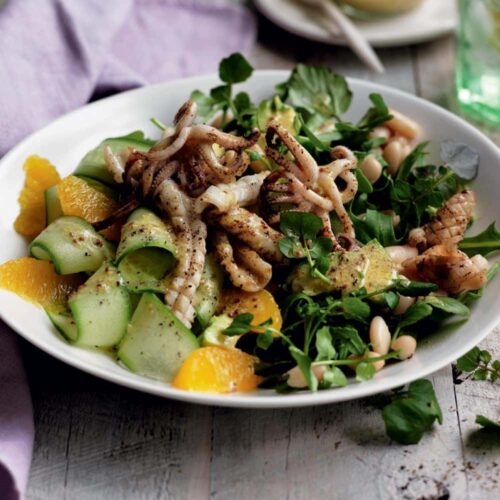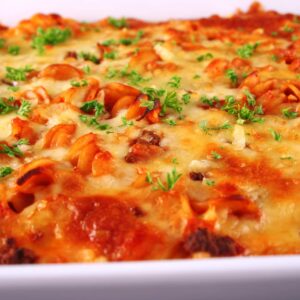
Dietitian Anna Richards has helpful nutritional advice and strategies for those who have a child following a gluten-free diet.
Adopting a gluten-free diet is often not easy for children. While toddlers and younger children typically transition to a gluten-free diet more easily, those children diagnosed with coeliac disease when they are older know more about the world (and what foods there are on offer) and they are more likely to make food comparisons.
Peer conformity, too, can play a role in the difficulties a child may face when dealing with their ‘special’ diet. Children want to be like their friends, to eat the same food, wear the same clothes, have the same felt pens, so anything that identifies a child as different can be difficult to adjust to.
Children often ask ‘how long will I have to eat this food?’ For children with an allergy, we can confidently answer ‘most children outgrow their allergies’, but for children diagnosed with coeliac disease, forever is a long time.
A family’s attitude is one of the biggest factors in helping a child adjust to a gluten-free diet, and usually the first couple of minutes of a consultation can identify which families will adjust well. How? It’s the family outlook which can make a great difference: ‘look at all the foods I can eat’ compared with ‘look at all the foods I can’t eat’.
To minimise the potential risks and pitfalls for children on a gluten-free diet, here’s some advice on coping with tricky situations.
Making breakfast filling
Without careful consideration, a gluten-free breakfast such as a gluten-free chocolate cereal and a slice of gluten-free toast and honey, washed down with a glass of juice may ‘run out’ by the time your child walks through the school gate. Try these foods to add fibre and protein:
- cheese on gluten-free toast
- eggs – poached, scrambled, French toast (using gluten-free bread)
- glass of milk
- gluten-free baked beans
- gluten-free lean bacon, sausages
- gluten-free pancakes with extra egg or added cottage cheese
- rice porridge cooked with milk
- sardines and tomato on gluten-free toast
- savoury mince
- smoked salmon
- smoothie
- yoghurt
Getting enough fibre
Fibre has a number of roles in the body. It promotes bowel health, gives food the essential ‘chew’ factor, helps even out energy levels, and maintains that feeling of fullness. As well as satiety, fibre slows down the rate we burn other fuels such as protein and carbohydrate.
Cereal fibre is an important fibre source in most diets. Cereal fibres such as wheat, oat, rye, barley and triticale also happen to be the gluten-containing fibres. To ensure a child is getting sufficient fibre, include these foods:
- a wide range of alternative gluten-free grains
- lots of fruit and vegetables
- dried fruit
- nuts and seeds
- add coconut to baking
Gluten-free products such as breads, cereals and crackers often contain little fibre and have a high glycaemic index. This means the energy in the food is used up quickly, only to leave that running-on-empty feeling, which is why children may have an afternoon ‘meltdown’, collapsing after school with little energy for anything else at the end of their day. Including fibre and protein in the meal helps reduce the glycaemic load of the meal and slow down this ‘burn rate’. To reduce the glycaemic load:
- add fibre
- add protein – especially dairy, eg. cheese on crackers, hummus, gluten-free paté
- include milk, yoghurt or a smoothie in meals and snacks
School lunches – coping with being different
The conformist rules are stronger in the playground than anywhere and sadly, many children suffer bullying over their lunchboxes – teasing about different foods, or others sneaking in gluten-containing crumbs in their lunchboxes. Ask questions if lunchboxes are coming home untouched.
There is also often pressure to include foods which can be eaten quickly so there’s more time to play!
Lunch needs to provide the staying-power to last all afternoon. Fibre and protein are key.
Nuts are ideal for the child with coeliac disease, but check your school’s nut policy as your child may have nut-allergic children in class. This tends to become less of an issue in older children who don’t play as closely.
Many school tuck shops will happily heat gluten-free food (gluten-free pies or sausage rolls) you drop in and store in their freezer. Make sure the lunch can be reheated in the wrapping to avoid cross contamination.
If your child’s class shares cake or lollies on birthdays, arrange to leave some slices of gluten-free cake or gluten-free cup cakes labelled in the staffroom freezer. Leave some lollipops or whatever your child’s teacher may be in the habit of giving out, labelled, with your child’s teacher. Encourage children to check labels from a young age with the mantra, ‘safe food is food in a packet with a label on it’.
Shared lunches can be a difficult time for children with coeliac disease or allergies. Send along food everyone can share and enjoy such as fruit and marshmallow kebabs or gluten-free popcorn.
For school sausage sizzles, send along a cooked sausage wrapped in foil which can be reheated in the foil on the school barbecue or send a gluten-free sausage with a skewer through it and cook it first.
A protein-filled lunchbox
- carton flavoured milk – check the flavour is gluten-free
- cheese – often processed is more heat-stable in the lunchbox
- chicken noodle soup with lots of chicken and rice noodles
- cold bakes such as courgette slice
- cold chicken drumstick, gluten-free sausage, mini meatballs
- falafel
- generous protein servings in sandwiches or wraps
- hardboiled egg/stuffed egg
- leftovers in a wide mouth thermos
- mini frittatas made in muffin pans
- multiple protein fillings, eg. hummus with chicken, cheese and salad
- rice salad with beans and corn
- soup with added split peas, lentils, beans
- sushi with generous protein
- thermos chilli beans plus separate gluten-free corn chips
- yoghurt
Great gluten-free snacks
- dried fruit
- frozen baby peas
- frozen corn kernels
- fruit
- gluten-free bars
- gluten-free crackers with hummus/cheese/paté
- milkshake
- mini cans creamed rice
- nuts and seeds
- roasted chickpeas
- smoothie
- soup
- trail mix
- veges – carrot sticks, stuffed celery
- yoghurt (check flavouring is gluten-free)
Fitting in with the family at meal times
A common question is whether the whole family should follow a gluten-free diet. The general answer is that as long as the gluten can be contained and the coeliac family member is not put at risk, the rest of the family can continue to follow a normal diet. To avoid cross-contamination at home:
- make most pantry basics (eg. baking powder) gluten-free
- have a clearly designated gluten-free toaster slot
- use pantry stickers or red and green-coloured sticky dots to identify safe and unsafe foods, and to label storage jars
- watch for crumbs in the butter and jam
Finding takeaway options
A common complaint is being unable to have a night off cooking! Fortunately, there are some suitable takeaway options.
- Fried food such as hot chips may seem okay, but anything else cooked in the same oil is likely to have contaminated the oil with gluten. A number of fast food chains fry hot chips in a separate vat of oil. If in doubt, ask what else has been cooked in the oil. A couple of years ago, one fast food chain started cooking hash browns in the fries vat resulting in gluten contaminating the fries and many children caught unaware becoming quite symptomatic.
- Hell Pizza do a gluten-free pizza. Make sure the pizza is left uncut as there have been known instances of a gluten-free pizza being cut with a gluten-contaminated cutter!
- Burger Fuel now do a gluten-free burger.
Eating out safely
While cafés and restaurants try to cater for those who need to follow a gluten-free diet, there is still some confusion in the catering industry over a gluten-free diet for those who have coeliac disease, as opposed to those avoiding gluten for other reasons.
Evaluate each café on its own merits: note if slices of gluten-free cake share the same plate as slices of gluten-containing cake.
The Coeliac Society has credit card-sized cards available to members to alert restaurant staff to the need for a gluten-free diet. These are particularly useful to communicate your message to wait staff and to let the chef know. It’s a ‘take me seriously’ message. When travelling, take these in the language of the countries you visit and pre-order gluten-free meals for your flight. It’s wise to take along your own food for children – being careful to comply with airline and immigration regulations.
Coping with birthday parties
It is probably safest to provide your own food for your child. However well-meaning the host is, unless they are familiar with gluten-free eating, it is very easy to get it wrong.
- Ask what food is to be served so you can provide similar gluten-free options for your child.
- Offer to make something to take to the party that all the children can share.
- Keep some ‘treat’ foods for your child which only come out at party time – having the lunchbox faithfuls in front of you at a party isn’t much fun!
- Go with your child when they are young and point out what foods are safe to eat.
- Establish a ‘swap jar’ – a jar of safe food and non-food items which your child can swap potentially unsafe party favours for. This will stop little rebels who would quite happily eat the unsafe food rather than miss out on the treat altogether!
Nutritional deficiencies
In undiagnosed or poorly managed cases of coeliac disease, the damage caused to the villi in the bowel causes malabsorption of most nutrients. Those who have been symptomatic for quite some time before diagnosis, or those who have had marked damage noted in their biopsy, are probably best to include a multivitamin for a few months while the gut heals.
Low iron is often an issue at diagnosis, particularly in children who have high iron needs and smaller appetites. Including extra iron-rich foods such as red meat at this time and/or including an iron supplement for a couple of months can be a good idea.
With well managed coeliac disease, the villi regenerate and regain their capacity to absorb nutrients.
The nutrients most commonly an issue in coeliac disease are iron, vitamin D (particularly in those who do not get regular exposure to sunlight), vitamin B12 (particularly in vegetarians and vegans) and calcium.
An annual blood test is a good idea and as you get older, a bone scan to assess bone health is worthwhile.
Support
Allergy New Zealand www.allergy.org.nzCoeliac Society www.coeliac.co.nzCoeliac Society of Australia www.coeliac.org.auDietetic Association www.dietitians.org.nzManufactured Foods Database www.mfd.co.nz
www.healthyfood.com










